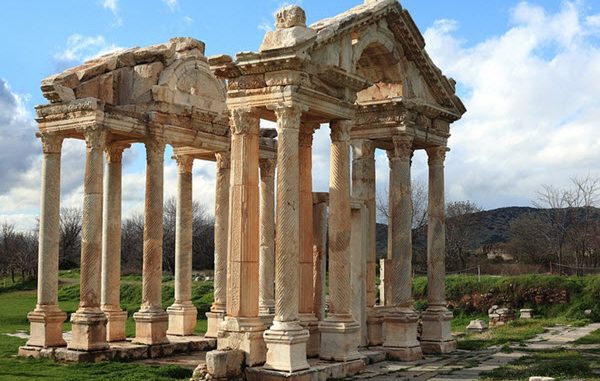
Comparison between ancient DNA and modern DNA suggest that the Greeks are descendants of the Myacenaeans and that only a small proportion of the DNA in living Greeks come from later migrations to Greece.
This is perfectly in line with how the Greeks themselves have explained their origin. The ancient Greeks idealised their Mycenaean ancestors and frequently brought them up in epic poems and classic tragedies.
The continuity between the Mycenaeans and the living Greeks of today is “particularly striking given that the Aegean has been a crossroads of civilizations for thousands of years,” says co-author George Stamatoyannopoulos of the University of Washington in Seattle, USA.
Scholars have long debated whether the ancient Greek descended from the actual Mycenaeans or if it was just a part of Greek mythology and self-image. The Mycenaean civilisation was the last phase of the Bronze Age in ancient Greece, spanning from approximately 1600 BCE to 1100 BCE. As far as we know, it was the first advanced civilisation in mainland Greece.
Some scholars have argued that the Mycenaeans died out or moved away after 1100 BCE, and that the ancient Greeks chiefly hailed from other peoples that migrated into the area. Others have suggested a large co-mingling of DNA between the Mycenaeans and other later migration waves into the region. Now, both of these theories are given strong opposition from DNA evidence analysed in a study co-led by Harvard researcher Iosif Lazaridis, Ph.D.
Comparing DNA
For this research, the group has had access to DNA derived from the teeth of 19 very old corpses.
- 10 Minoans from Crete, from the period 2900 BCE – 1700 BCE
- 4 Mycenaeans from the archaeological site at Mycenae and other cemeteries on the Greek mainland, from the period 1700 BCE – 1200 BCE.
- 5 people from other early farming Bronze Age cultures in Greece and Turkey, from the period 5400 BCE – 1340 BCE.
Lazaridis have compared 1.2 million letters of genetic code across these genomes to those of 334 other ancient people from around the globe and to those of 30 modern Greeks. The comparisons yielded several very interesting results that has helped shed new light on the relationship between the various peoples inhabiting this part of the world.
Results
- The ancient Minoans and ancient Mycenaeans were the groups most closely related to each other. For both of them, three-quarters of their DNA came from early farmers who once lived in Greece and southwestern Anatolia. Both groups also had some DNA from people hailing from the eastern Caucasus, near modern-day Iran. This suggests a migration taking place from the east to Greece before the Mycenaeans split from the Minoans.
- Unlike the Minoans, the Mycenaeans had gotten a significant portion (4% to 16%) of their DNA from northern ancestors hailing from Eastern Europe or Siberia. This suggests a migration from the east that reached mainland Greek but not the island of Crete.
- There is a lot of genetic overlap between the DNA from the ancient Mycenaeans and the DNA from the now living Greeks in the study. Modern Greeks share similar proportions of DNA from the same ancestral sources as the Mycenaeans, with one notable exception: modern Greeks have a bit less DNA from ancient Anatolian farmers and a bit more DNA from later migrations to Greece.
Read more
Genetic origins of the Minoans and Mycenaeans
Article published in Nature 548 (7666) August 2017
DOI: 10.1038/nature23310
